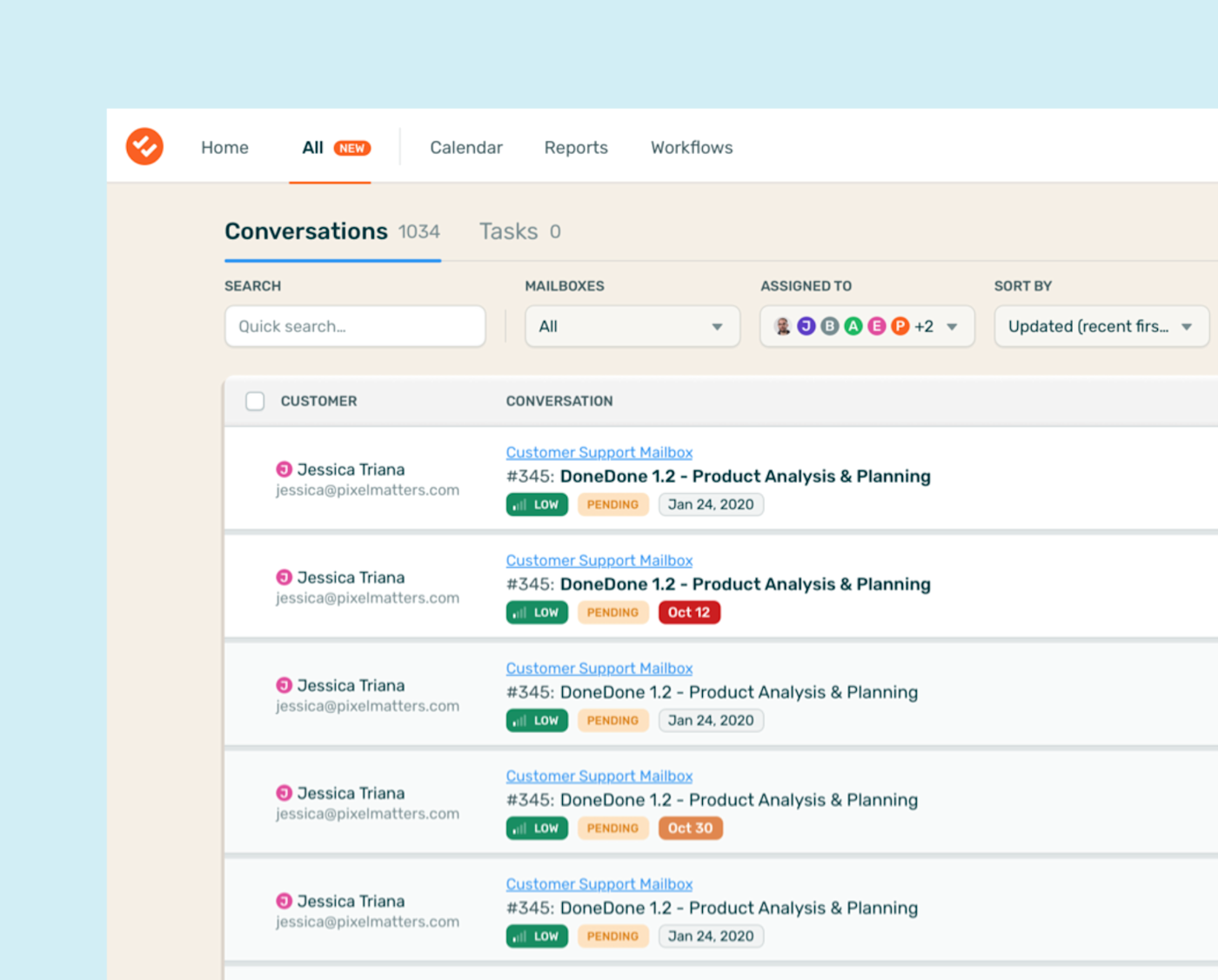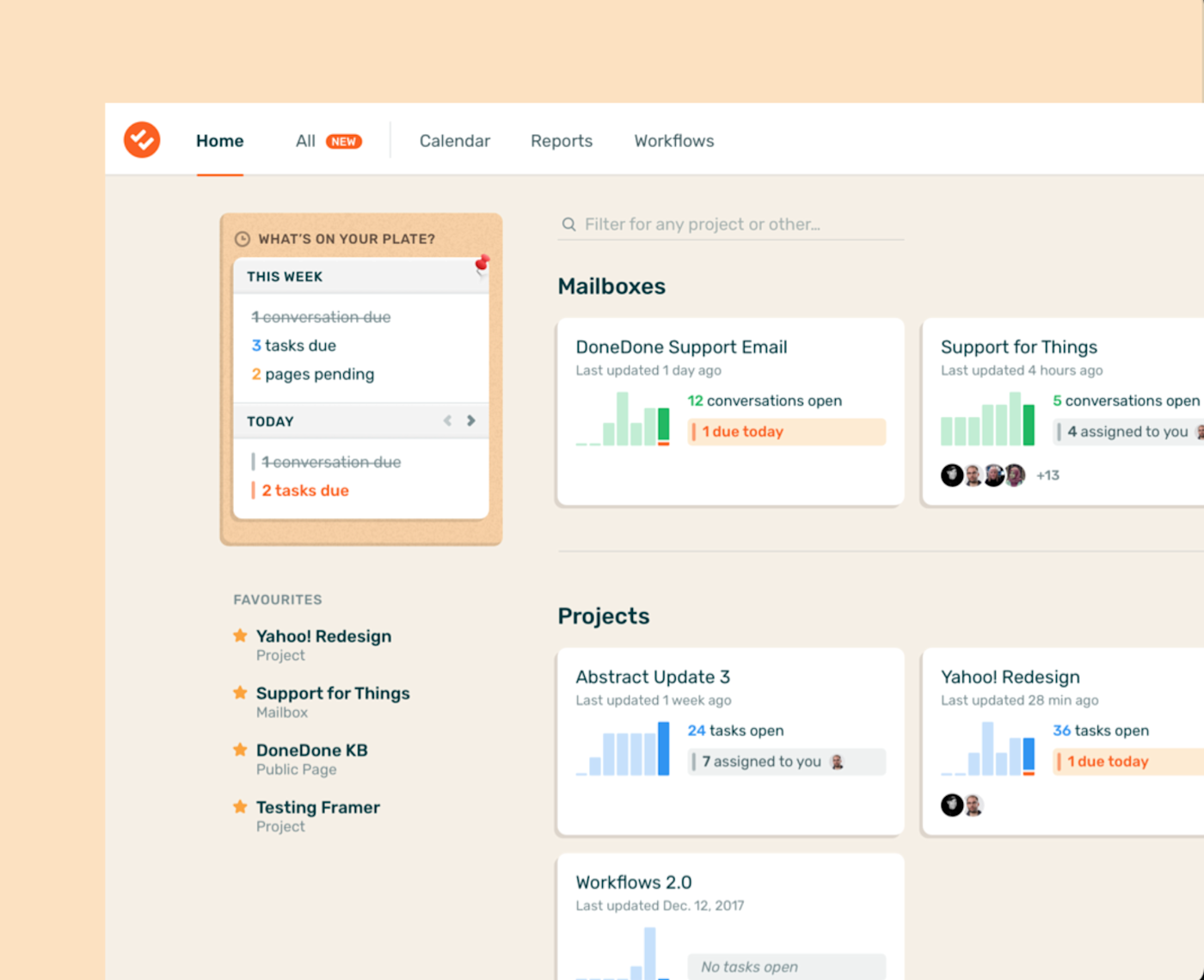About a decade ago, my co-founder, Ka Wai Cheung, and I found ourselves searching for a bug tracker for managing client work at our digital agency.
At the agency, we helped clients build and develop custom apps. And no matter what bug tracker we tried, we couldn't find one that helped us during the testing phase of our apps—the phase where we find and fix any issues before launch.

As we evaluated solutions, looking at feature sets, comparing pricing, and reading customer reviews, the same problem kept coming up: most of them felt like a kitchen sink of features that we were never going to use.
Quickly discovering we weren't going to find our solution in the market, we began writing our own software and developed the bug tracking solution we needed.
We realized the biggest help we could give users was an absence of the kitchen sink; each and every feature was stripped thoroughly before making it into DoneDone. That's why, at DoneDone, we are big proponents of one key strategy for scaling a business: simplicity.
Start with the customer
Since releasing DoneDone as a simple bug and issue tracker, it's evolved into a collaboration tool aimed at helping businesses across industries, from digital agencies to agriculture, media outlets, property managers, and everything in between.
Like any SaaS business looking to scale, we've always felt a gentle tug between staying on track and chasing the shiny ball. We knew we needed to scale the tool in order to better serve the new audiences that were using DoneDone, but we didn't want to fall into the trap we were trying to avoid to begin with. We needed to keep things simple—we just didn't know where to start.
That's when we turned to customer research. We started analyzing our tool's feature usage and looking more into the different use cases from our newer audiences.
In order to do this, we began logging customer feedback in our customer support mailbox. Even when the conversation was not a direct feature request, we assigned specific tags, categorized it, and logged it.

While I'm the co-founder, I'm ultimately the product owner, and I handle the lion's share of customer support. This keeps me completely in touch with customer sentiment through support, making it that much easier to know what to do next. I highly recommend that founders and executives work through the customer support queue, especially at small companies.
The litmus test for introducing new features was and still remains, very simple: "Will all of our customers use this and benefit from it?" If it's not something that is universally adopted, we move it to the bottom of our backlog or remove it altogether. Our aim is to focus on making the most improvement for the most amount of customers possible—and not bog the product down.
A rising tide lifts all boats.
By digging deeper into customer research, we discovered two things:
We realized that a full 50% of our existing customers didn't even know that our tool had a help desk capability. That was a huge miss—and a huge opportunity for us, because the ones that used it, used it heavily.
We homed in on four specific buckets for our customer use cases: bug tracking, project management, customer support, and hiring and onboarding.
Simplicity instead of the shiny ball
Once we had this research in front of us, the path forward became clear. We couldn't chase the shiny ball and offer every possible feature to every possible group. We needed to prioritize.
But how to do that? How to actually go down this path while keeping things simple? That's when another lightbulb moment happened: What got us here won't get us there. It became clear that the original DoneDone was too rigid; while we wanted to continue to support our bug tracking audience, we knew the required construct wasn't used by everyone.
Instead of attempting to slap new features onto our existing bug tracker tool, we decided to build a brand new DoneDone. Starting from scratch gave us a wide-open ocean of possibilities. And it forced us to stay simple, only introducing the features that would have the biggest impact.

As we were building the new tool, we made sure to echo the simplicity of the product in our processes. We followed the general philosophy of Agile development but kept things fluid. The last thing we wanted was for processes to turn into unnecessary rituals.
For example, we did some basic estimation and scoring of tasks—but only enough to get a gist of the road ahead. We allowed for more fluidity in prioritization: often we switched mid-stream to tackle a flurry of small issues instead of a larger one, if the scope of the larger one was more involved than we first thought.
Simplifying our processes has naturally translated into making DoneDone a simple tool, one that meets the needs of our customers, while avoiding the kitchen sink of features.
Looking back and looking ahead
Keeping your business simple is no easy feat, and it may require big changes in your organization. We ended up building an entirely new business and SaaS product because of this philosophy. With that said, it's a worthy aim for SaaS businesses looking to scale because it keeps you focused on what matters most: your customers.
Our advice for scaling with simplicity?
Be hesitant about introducing new products and features unless they are absolutely necessary. Do your research, and spend time within your customer help desk when you can. Base your next project on customer feedback, keeping your own vision in mind. If a change you're considering won't apply to all of your customers, how necessary is it?
Finally, avoid overly complex workflows and processes to get the job done as you scale. Complexity is a time suck, it creates unnecessary bloat, and it will naturally be avoided by team members. So keep your processes simple and your tool will naturally follow suit.
This was a guest post from Michael Sanders, co-founder and COO of DoneDone. Want to see your work on the Zapier blog? Check out our guidelines and get in touch.





